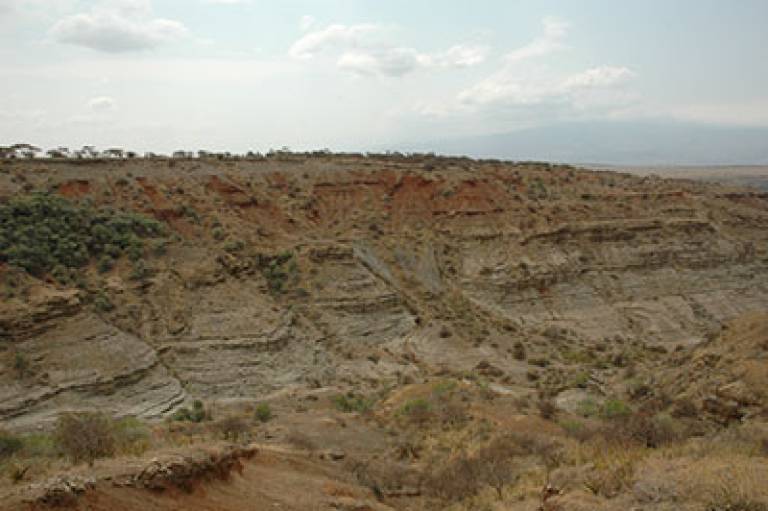Early humans optimised use of stone tools at Olduvai Gorge
16 January 2020
Early Stone Age populations living up to 1.8 million years ago made complex decisions in selecting different types of stone to optimise a variety of cutting tools according to a new study involving Institute researcher Tomos Proffitt.

The collaborative study, involving researchers at the University of Kent and the Centre for Human and Social Sciences, Spain as well as UCL, and published in the Journal of Royal Society Interface, offers new insight into the complexity of stone tool use, design and production.
It is suggested that the hominins selected raw materials based on their sharpness and durability while also factoring in how long a tool was intended to be used for, their relative functional performance and the distance hominins had to travel to raw material sources.
The research is based on evidence from mechanical testing of the raw materials and artefacts found at Olduvai Gorge in Tanzania, one of the world’s most important sites for human origins research. Olduvai Gorge has three main raw material groups suitable for producing stone tools; lavas, chert, and quartzite. Each was used by hominins, but their selection varies chronologically, between sites, and is dependent on the tool type produced. The pre-historic industry of stone tool production at this site is described as the Oldowan.
According to Tomos Proffitt, co-author of the study:
““The decision processes underlying raw material selection behaviours represents a major element of Palaeolithic research, and is often vital to interpreting the behaviour and cognitive capabilities of early hominins.”
Chert and quartzite from Olduvai Gorge were shown to be significantly sharper than basalt collected from the same location; however, basalt was shown to be more durable. By selecting the material best suited to specific functional needs, hominins optimised the performance of their tools and ensured that tool efficiency and ‘ease-of-use’ was maximised.
As Tomos indicates:
“"Early hominins during the Oldowan were probably using stone flakes for a variety of tasks. Mostly for butchering animals whilst scavenging, but also probably for cutting various plants and possibly even shaping wood. A durable cutting edge would have been an important factor when using these tools. By understanding the way that these tools work and their functional limits it allows archaeologists to build up a greater understanding of the capabilities of our earliest ancestors at the dawn of technology.”
The research was funded by British Academy and the European Research Council.
Read more
 Close
Close

